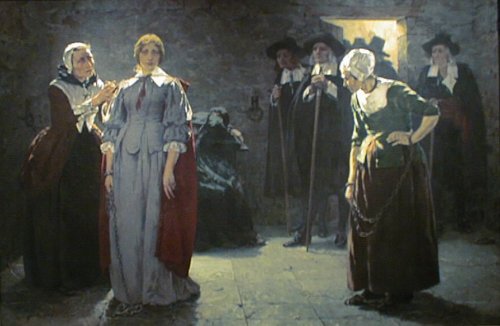Rye Ergo and Witches
Today we ask: Is it from God? Is it from the Devil? Or is it from the bread we eat? The University of Houston's College of Engineering presents this series about the machines that make our civilization run, and the people whose ingenuity created them.
In 1976 Linnda Caporael offered the first evidence that the Salem witch trials followed an outbreak of rye ergot. Ergot is a fungus blight that forms hallucinogenic drugs in bread. Its victims can appear bewitched when they're actually stoned.
Ergot thrives in a cold winter followed by a wet spring. The victims of ergot might suffer paranoia and hallucinations, twitches and spasms, cardiovascular trouble, and stillborn children. Ergot also seriously weakens the immune system.
Now Mary Matossian tells a story about rye ergot that reaches far beyond Salem. She studies seven centuries of demographics, weather, literature, and crop records from Europe and America.
Down through history, Matossian argues, drops in population have followed diets heavy in rye bread and weather that favors ergot. During the huge depopulation in the early years of the Black Death, right after 1347, conditions were ideal for ergot.
Many symptoms of ergot poisoning and the plague are similar. They probably coexisted. The worst plague damage occurred where ergot suppressed the human immune system and made people vulnerable. Records of plague deaths show huge regional variations. The plague probably followed pockets of rye ergot.
And what about witch hunts? The symptoms of bewitchment are consistent, but the way those symptoms were received was not. Crazy behavior was commonplace in the medieval plague years. The mad "Dance of Death" is a theme shot through medieval iconography. The spasms suffered by ergot victims were called St. Vitus Dance. Do you remember Ingmar Bergman's wonderful movie about the plague, The Seventh Seal? It began and ended with the figure of death leading the doomed in an eerie dance across a hilltop.
Then, in the 1500s and 1600s, the symptoms of ergot were blamed on witches -- all over Europe, and finally in Massachusetts. Witch hunts hardly occurred where people didn't eat rye.
In the 1740s, the so called Age of Rationalism, ergot symptoms became a mark of holy, not demonic, possession. Visions, trances, and spasms were read as religious ecstasy. It was a period of religious revival that historians call the Great Awakening.
And we're left to wonder just how we cope with diseases we don't understand, today. I read our kinship with those old ergot sufferers in something Kipling wrote:
I have eaten your bread and salt.
I have drunk your water and wine.
The deaths ye died I have watched beside
And the lives ye led -- were mine.
I'm John Lienhard at the University of Houston, where we're interested in the way inventive minds work.
(Theme music)
Matossian M.K., Poisons of the Past. New Haven: Yale University Press, 1989.
I'm grateful to Gene Chiappetta, UH College of Education, for suggesting the Matossian source.
For more on rye ergot, see Episode 258.

The Witches, painted by Walter McEwan, 1892